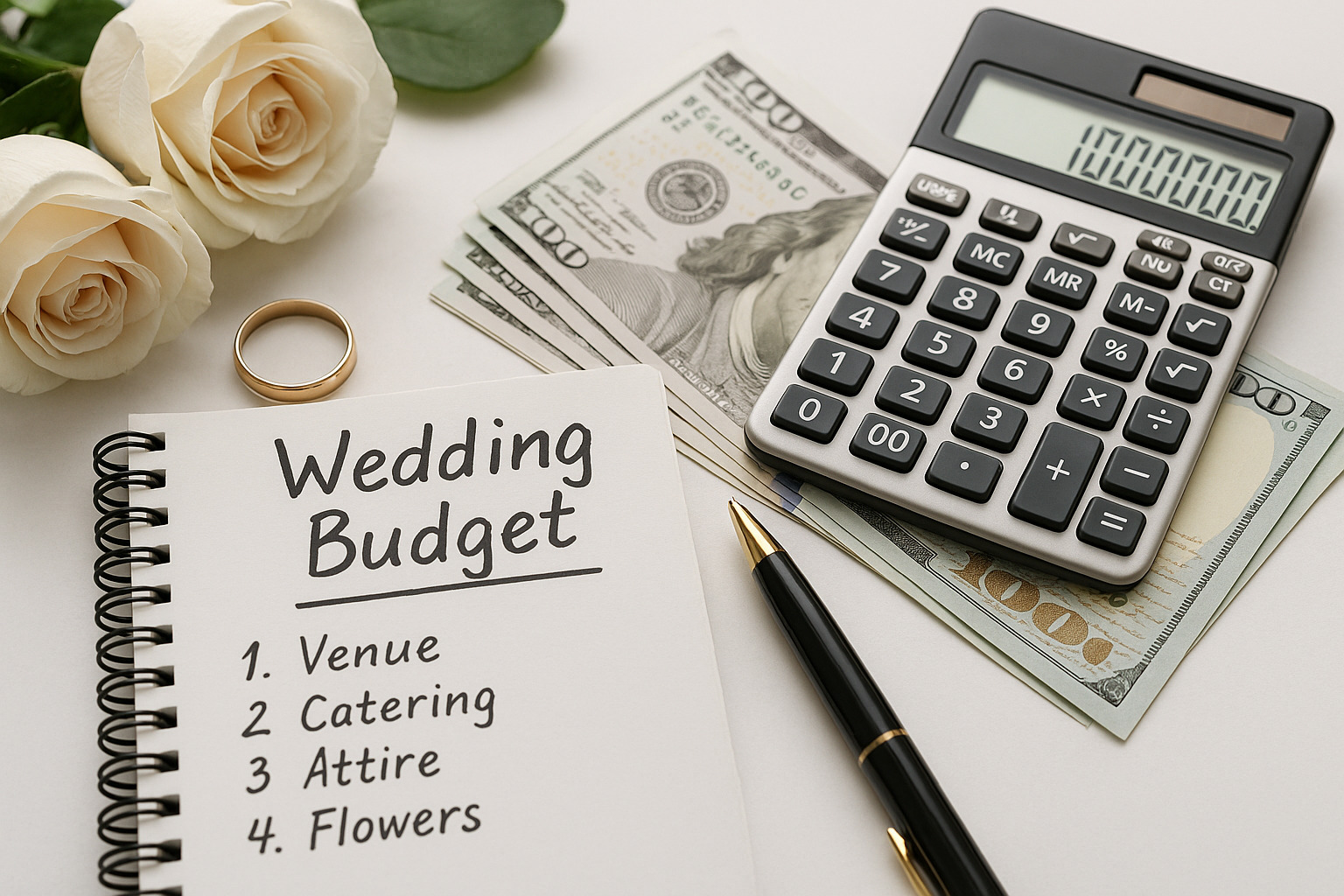Planning a wedding doesn’t have to drain your savings. The idea of a beautiful celebration with meaning, personality, and unforgettable moments can still coexist with a practical budget. Here’s how to make smart choices without sacrificing joy.
1. Set a Realistic Total Budget Before Anything Else
Create a figure that aligns with your current financial situation. Use real numbers based on your savings and what you can reasonably set aside between now and the wedding date.
Break your total into percentages:
- Venue and catering: 40%
- Photography/videography: 15%
- Attire and beauty: 10%
- Decor and flowers: 10%
- Entertainment: 10%
- Miscellaneous/emergency fund: 10%
- Invitations and favors: 5%
Having these categories assigned in advance helps prevent overspending.
2. Identify Your Top 3 Priorities
What do you care about the most? Is it a stunning venue? Incredible food? A live band? Invest more in the top three and scale down on everything else.
Ask yourselves:
- What will guests remember most?
- What do we want to look back on and feel proud of?
- What makes this celebration feel like us?
Once these priorities are clear, decisions become simpler.
3. Trim the Guest List Strategically
Every added guest increases costs: chairs, meals, tables, favors, and even the venue size. A smaller, intentional list lets you spend more per guest for a better experience.
Cut with purpose:
- No kids unless they’re immediate family
- Plus-ones only if the couple is serious
- No obligation invites for coworkers or distant relatives
Less people often means more warmth and connection.
4. Pick an Off-Peak Date or Time
Saturday evenings in peak seasons are the most expensive. Choose a weekday, brunch reception, or shoulder season to bring costs down significantly.
Options that save money:
- Friday evening weddings
- Sunday brunch weddings
- January to March or late October to mid-December
Vendors are more flexible during off-peak months.
5. Choose a Venue That Needs Minimal Decor
A naturally beautiful location reduces how much you’ll spend on flowers, lighting, and draping. Think gardens, art galleries, restaurants with ambiance, or industrial-chic lofts.
Bonus ideas:
- Backyard weddings
- Beachside ceremonies at public parks
- City halls with architectural character
Venues with built-in charm require fewer upgrades.
6. Rent, Borrow, or Buy Pre-Loved
You’ll wear most wedding items once. Renting can save hundreds on tuxedos, gowns, arches, or even signage. Don’t hesitate to borrow from recently married friends.
Look for these pre-loved options:
- Bridal wear (many resale sites exist)
- Decor items like centerpieces or lanterns
- Specialty furniture or serving displays
Most items look brand-new with simple cleaning or styling.
7. Use Digital Invitations and RSVPs
Stationery adds up. Switch to digital for save-the-dates and RSVPs, or even the entire invitation suite. It’s efficient, trackable, and cuts out printing and postage.
Tools to try:
- Paperless Post
- Greenvelope
- Zola
If you love paper, reserve it for a smaller printed invite and digitize the rest.
8. Go Minimal With Floral Design
Fresh flowers are gorgeous but costly. Mix in dried or faux blooms, reuse ceremony flowers at the reception, and skip floral centerpieces entirely in favor of candles or greenery.
Affordable choices:
- Baby’s breath
- Eucalyptus garlands
- Dried lavender or pampas grass
Avoid exotic blooms or anything out of season.
9. Hire Talented Newcomers Instead of Top-Tier Vendors
Experienced vendors come with higher rates. But up-and-comers, recent grads, or people building portfolios may offer lower prices without sacrificing quality.
Think:
- Photography students
- Indie caterers or food trucks
- DIY DJ setups with pre-made playlists
Ask for samples of past work and always read contracts carefully.
10. Say Yes to Simplified Catering Options
A plated dinner with multiple courses costs more than a buffet or family-style meal. Opt for crowd-pleasing dishes that don’t require waitstaff.
Cost-effective meal ideas:
- Pasta and salad bar
- Taco or ramen station
- Charcuterie grazing tables
Skip the fancy cake and offer cupcakes, cookies, or a dessert bar instead.
11. Track Every Expense, No Matter How Small
Use a shared spreadsheet or wedding budget app. Include deposits, tips, transportation, beauty trials, and backup options. Hidden costs add up.
Helpful tools:
- Google Sheets (with automatic formulas)
- WeddingWire Budget Tool
- Mint or YNAB for syncing with accounts
Being detail-obsessed now prevents regrets later.
12. Make DIY Count, But Only Where It Saves
DIY projects can add a personal touch, but not all save money. Consider your time, tools needed, and how many supplies you’ll realistically reuse.
Smart DIY areas:
- Ceremony programs
- Seating chart signage
- Guest welcome bags
Skip large-scale florals or baking your own cake unless you’re trained.
13. Use Cashback or Points Cards Strategically
If you’re disciplined, use a credit card that earns travel or cashback rewards. Pay it off monthly to avoid interest. Weddings often rack up enough spending for a free honeymoon flight.
Watch for:
- Signup bonuses
- Points multipliers on categories like dining
- Travel protections if booking flights or hotels
Only spend what you’ve budgeted.
14. Be Transparent With Family Contributions
If parents or relatives are helping out, discuss expectations early. Will they cover specific vendors or contribute a set amount? Avoid assumptions and awkwardness later.
Key questions to clarify:
- Is this a gift or do they want input on decisions?
- Can we allocate the funds where we need it most?
- What happens if costs change?
Clear communication keeps planning stress-free.
15. Keep Your Purpose at the Center
A wedding is one day. Marriage is forever. Resist pressure to impress, overspend, or compete with someone else’s aesthetic. Focus on love, intention, and shared joy.
Ask yourselves regularly:
- Does this cost bring value?
- Is this for us or for show?
- Can we put that money toward our future instead?
Budgeting well isn’t about scarcity. It’s about creating meaning on your own terms.
